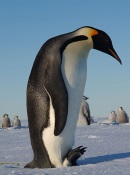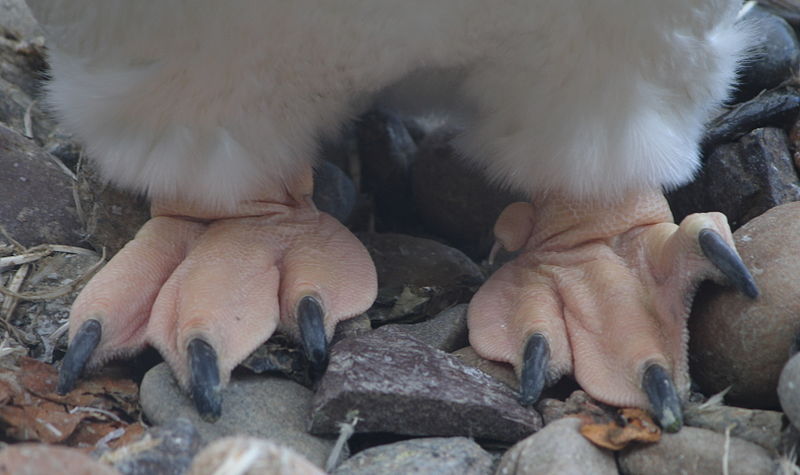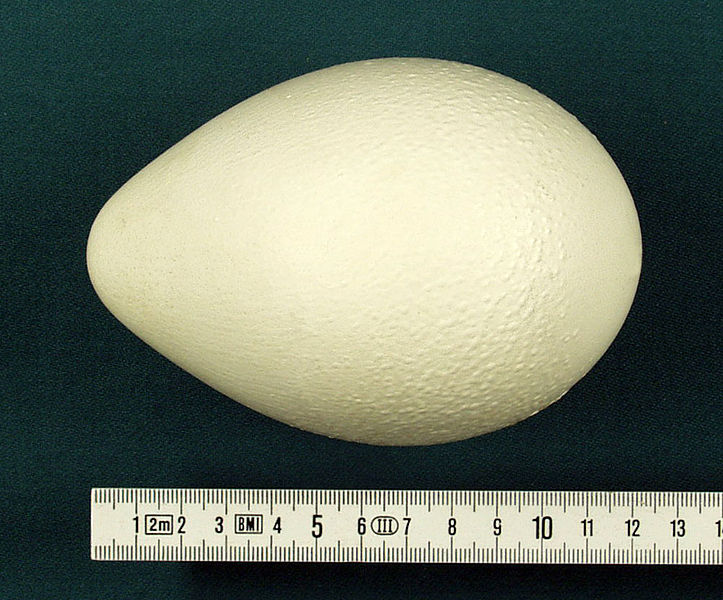Penguins -- School-age
There are 17 species of penguins in the world. Penguins are found in the southern hemisphere. There are penguins living on the ice shelf in Antarctica, the warmth of the Galapagos, South Africa, Australia and New Zealand. Penguins do not have to live on ice. They need to live near bodies of water. The water the penguins live near in the southern hemisphere is cold water that comes from the Antarctic current. In the warmer climates penguins remain cool by staying in the water. In colder climates penguins survive with a layer of fat beneath their feathers.
Map showing the range of the penguin.

What Do Penguins Look Like?
Penguins come in many different sizes and colors. The smallest penguin is the Little Blue Penguin at about 15 to 16 inches (40 cm) to the largest, the Emperor Penguin which stands 4 feet tall (1.2m) and weighs from 70-90 pounds (40kg).

Blue Penguin
Penguins have stiff wings that act like paddles when they swim. Penguins have webbed feet with visible claws that do not retract. A penguins feet are set far back on their bodies, which causes them to stand in an upright position. On land penguins use their strong webbed feet for walking. In the water they use their feet for braking and steering as they dive and swim. A penguin has a large head, short neck, and an elongated body with a short wedge-shaped tail.
The penguin species most people are familiar with are the Antarctic Emperor penguins. The black-and white feathers provide camouflage when the penguin is in the water. The white bottom makes is difficult for anything looking up at the bird from beneath in the water to see the penguin. The black back of the penguin makes it difficult for animals above looking down into the water to see the penguin. Those above looking down at the water will only see the dark depths of the water.

Emperor Penguin
How Do Penguins Stay Warm?
What keeps penguins warm in the water is an under-the-skin layer of fat. It insulates the penguin helping to keep it warm in the water. Penguin feathers are good at shedding water when the bird comes out of the water. On land the feathers help keep the penguin warm. Under the penguin’s feathers is an under-layer of fine woolly down. When the penguin gets cold, it can puff their feathers out to trap air for better insulation. Actually penguins have more of a problem of getting too hot. When they get to hot they puff their feathers out more so that the trapped warm air can escape and the penguin can cool down.
 The area of a penguin that loses heat is its flippers and feet. The feet loose heat which can help keep the penguin cool. The penguins muscles that work the flippers and feet are not in the flipper or feet but deeper in the penguins body where it is warmer. It does not matter if the feet and flippers get cold as the muscles are in a warm area and will still work normally.
The area of a penguin that loses heat is its flippers and feet. The feet loose heat which can help keep the penguin cool. The penguins muscles that work the flippers and feet are not in the flipper or feet but deeper in the penguins body where it is warmer. It does not matter if the feet and flippers get cold as the muscles are in a warm area and will still work normally.
Penguins living in cold areas with ice and snow stand a lot. If they lay on the snow they have a large area of their body on the cold snow. If they stand they have a small area on the cold. If they stand on only a part of their feet there is a smaller area in contact with the cold snow and ice. When it is really cold penguins stand on their heels holding their toes up. How do they not fall over backwards? They use their tall to support themselves. Their stiff tail feathers lose no heat. In cold weather, penguins stand on their heels and a stiff tail.











